Posted on November 18th, 2015 by Mary Lord
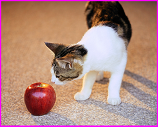 Student teams in grades 3 to 7 learn the key role that smell plays in being able to recognize foods by conducting taste tests while holding and not holding their noses. They then create bar graphs comparing the number of correct identifications.
Student teams in grades 3 to 7 learn the key role that smell plays in being able to recognize foods by conducting taste tests while holding and not holding their noses. They then create bar graphs comparing the number of correct identifications.
Read More
Filed under: Class Activities, Grades 6-8, Grades 6-8, Grades K-5, Lesson Plans | Comments Off on A Tasty Experiment
Tags: bar chart, CCSS, Chemical Engineering, Class Activities, flavor engineering, food, food engineering, Grades 6-8, Grades K-5, NGSS, senses, smell, taste
Posted on October 28th, 2015 by Mary Lord
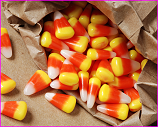 In this activity, students in grades 3 to 12 learn how design differences can affect the success of a final product by working in pairs to evaluate, design, and build a better candy bag. They must predict the volume and strength of their designs, test and redesign the bag based on its ability to hold weight, discuss findings, and share results.
In this activity, students in grades 3 to 12 learn how design differences can affect the success of a final product by working in pairs to evaluate, design, and build a better candy bag. They must predict the volume and strength of their designs, test and redesign the bag based on its ability to hold weight, discuss findings, and share results.
Read More
Filed under: Class Activities, Grades 6-8, Grades 9-12, Grades K-5 | Comments Off on Build a Better Candy Bag
Tags: build, candy bag, Class Activities, container, Design, Engineering Design Process, Grades 6-8, Grades 9-12, Grades K-5, Materials Engineering
Posted on September 23rd, 2015 by Mary Lord
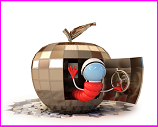 In this NASA activity, students in grades 1-8 learn about the challenges of space nutrition and designing food packaging by observing, measuring, comparing, and contrasting the ripening of fruits and vegetables when exposed to air and the effect of chemical treatments to inhibit ripening.
In this NASA activity, students in grades 1-8 learn about the challenges of space nutrition and designing food packaging by observing, measuring, comparing, and contrasting the ripening of fruits and vegetables when exposed to air and the effect of chemical treatments to inhibit ripening.
Read More
Filed under: Class Activities, Grades 6-8, Grades 6-8, Grades K-5, Grades K-5, K-12 Outreach Programs, Lesson Plans | Comments Off on Ripening Fruit in Space
Tags: Aerospace, agriculture, astronauts, Class Activities, fruit, Grades 6-8, Grades K-5, Mathematics, measurement, NASA, nutrition, observation, ripening, space food, surface area, vegetables
Posted on September 23rd, 2015 by Mary Lord
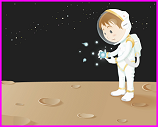 The year is 2032 and your middle-school explorers have successfully achieved a manned mission to Mars! After establishing criteria to help look for signs of life, they conduct a scientific experiment in which they evaluate three “Martian” soil samples and determine if any contains life.
The year is 2032 and your middle-school explorers have successfully achieved a manned mission to Mars! After establishing criteria to help look for signs of life, they conduct a scientific experiment in which they evaluate three “Martian” soil samples and determine if any contains life.
Read More
Filed under: Class Activities, Grades 6-8, Grades 6-8, Lesson Plans | Comments Off on Are We Alone?
Tags: Aerospace, astronaut, Bioscience, Chemistry, Class Activities, exploration, Grades 6-8, Lesson Plan, life, manned mission to Mars, Mars, NASA, Space
Posted on September 13th, 2015 by Mary Lord
 In this lesson to teach middle school students how a spacecraft gets from the surface of the Earth to Mars, students first investigate rockets and how they are able to get us into space, then discuss the nature of an orbit as well as how orbits enable us to get from planet to planet.
In this lesson to teach middle school students how a spacecraft gets from the surface of the Earth to Mars, students first investigate rockets and how they are able to get us into space, then discuss the nature of an orbit as well as how orbits enable us to get from planet to planet.
Read More
Filed under: Class Activities, Grades 6-8, Grades 6-8, Lesson Plans | Comments Off on Get Me Off This Planet!
Tags: Aerospace, astronauts, calculations, Class Activities, forces, Grades 6-8, Grades 9-12, Humans in Space, Lesson Plans, Mars, motions, NASA, Physics, trajectory
Posted on August 19th, 2015 by ASEE
 As a teacher, you’re supposed to have all the answers–but you know that sometimes, you just don’t. What if you always had an engineering expert to provide inspiration and advice? The National Academy of Engineering (NAE) recently announced the launch of LinkEngineering, a new website that connects preK-12 teachers with engineering experts, fellow educators, lesson plans, tips, and tools.
As a teacher, you’re supposed to have all the answers–but you know that sometimes, you just don’t. What if you always had an engineering expert to provide inspiration and advice? The National Academy of Engineering (NAE) recently announced the launch of LinkEngineering, a new website that connects preK-12 teachers with engineering experts, fellow educators, lesson plans, tips, and tools.
Read More
Filed under: Class Activities, For Teachers, Grades 6-8, Grades 9-12, Grades K-5, K-12 Education News, K-12 Outreach Programs, Lesson Plans, Web Resources | Comments Off on NAE Connects Educators with Experts
Tags: ASEE, Lesson Plans, LinkEngineering, NAE, Web Resources
Posted on June 26th, 2015 by Mary Lord
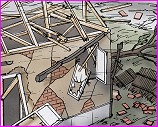 In this activity for middle school science, high school physics, or engineering, groups of students explore the housing crisis caused by natural disasters by applying appropriate technology and fluid mechanics to design sustainable shelters that can withstand flooding and high winds.
In this activity for middle school science, high school physics, or engineering, groups of students explore the housing crisis caused by natural disasters by applying appropriate technology and fluid mechanics to design sustainable shelters that can withstand flooding and high winds.
Read More
Filed under: Class Activities, Grades 6-8, Grades 6-8, Grades 9-12, Grades 9-12, K-12 Outreach Programs, Lesson Plans | Comments Off on Disaster-Proof Housing
Tags: Archimedes principle, Bernoulli, Class Activities, Design, disaster shelter, Engineering Design Process, fluid dynamics, Grades 6-8, load, Physics, statics
Posted on May 12th, 2015 by Mary Lord
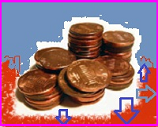 In this activity, student teams in grades 8 and up learn about the engineering design process and physical forces by building a bridge from a single sheet of paper and up to five paper clips that will span 20 cm and support the weight of 100 pennies. Like real engineers, teams also have limited budgets and must make trade-offs in materials.
In this activity, student teams in grades 8 and up learn about the engineering design process and physical forces by building a bridge from a single sheet of paper and up to five paper clips that will span 20 cm and support the weight of 100 pennies. Like real engineers, teams also have limited budgets and must make trade-offs in materials.
Read More
Filed under: Class Activities, Grades 6-8, Grades 6-8, Grades 9-12, Grades 9-12 | Comments Off on Paper Penny Bridge
Tags: applied mathematics, Bridge Design, bridges, Civil Engineering, Class Activities, forces, Grades 6-8, Grades 9-12, Lesson Plan, Physics
Posted on April 29th, 2015 by Mary Lord
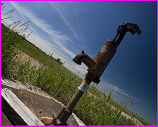 Teams of students in grades 5 to 7 locate a contaminant spill in a hypothetical site by measuring the pH of soil samples. They then predict the direction of groundwater flow using mathematical modeling and use the engineering design process to come up with alternative treatments for the contaminated water.
Teams of students in grades 5 to 7 locate a contaminant spill in a hypothetical site by measuring the pH of soil samples. They then predict the direction of groundwater flow using mathematical modeling and use the engineering design process to come up with alternative treatments for the contaminated water.
Read More
Filed under: Class Activities, Grades 6-8, Grades 6-8, Grades K-5, Grades K-5, Lesson Plans | Comments Off on Groundwater Pollution Detectives
Tags: aquifer, Class Activities, clean drinking water, Environmental Engineering, Environmental science, groundwater, Pollution, Water Resources
 Student teams in grades 3 to 7 learn the key role that smell plays in being able to recognize foods by conducting taste tests while holding and not holding their noses. They then create bar graphs comparing the number of correct identifications.
Student teams in grades 3 to 7 learn the key role that smell plays in being able to recognize foods by conducting taste tests while holding and not holding their noses. They then create bar graphs comparing the number of correct identifications. 








 In this activity, students in grades 3 to 12 learn how design differences can affect the success of a final product by working in pairs to evaluate, design, and build a better candy bag. They must predict the volume and strength of their designs, test and redesign the bag based on its ability to hold weight, discuss findings, and share results.
In this activity, students in grades 3 to 12 learn how design differences can affect the success of a final product by working in pairs to evaluate, design, and build a better candy bag. They must predict the volume and strength of their designs, test and redesign the bag based on its ability to hold weight, discuss findings, and share results. In this NASA activity, students in grades 1-8 learn about the challenges of space nutrition and designing food packaging by observing, measuring, comparing, and contrasting the ripening of fruits and vegetables when exposed to air and the effect of chemical treatments to inhibit ripening.
In this NASA activity, students in grades 1-8 learn about the challenges of space nutrition and designing food packaging by observing, measuring, comparing, and contrasting the ripening of fruits and vegetables when exposed to air and the effect of chemical treatments to inhibit ripening. The year is 2032 and your middle-school explorers have successfully achieved a manned mission to Mars! After establishing criteria to help look for signs of life, they conduct a scientific experiment in which they evaluate three “Martian” soil samples and determine if any contains life.
The year is 2032 and your middle-school explorers have successfully achieved a manned mission to Mars! After establishing criteria to help look for signs of life, they conduct a scientific experiment in which they evaluate three “Martian” soil samples and determine if any contains life. In this lesson to teach middle school students how a spacecraft gets from the surface of the Earth to Mars, students first investigate rockets and how they are able to get us into space, then discuss the nature of an orbit as well as how orbits enable us to get from planet to planet.
In this lesson to teach middle school students how a spacecraft gets from the surface of the Earth to Mars, students first investigate rockets and how they are able to get us into space, then discuss the nature of an orbit as well as how orbits enable us to get from planet to planet. As a teacher, you’re supposed to have all the answers–but you know that sometimes, you just don’t. What if you always had an engineering expert to provide inspiration and advice? The National Academy of Engineering (NAE) recently announced the launch of LinkEngineering, a new website that connects preK-12 teachers with engineering experts, fellow educators, lesson plans, tips, and tools.
As a teacher, you’re supposed to have all the answers–but you know that sometimes, you just don’t. What if you always had an engineering expert to provide inspiration and advice? The National Academy of Engineering (NAE) recently announced the launch of LinkEngineering, a new website that connects preK-12 teachers with engineering experts, fellow educators, lesson plans, tips, and tools. In this activity for middle school science, high school physics, or engineering, groups of students explore the housing crisis caused by natural disasters by applying appropriate technology and fluid mechanics to design sustainable shelters that can withstand flooding and high winds.
In this activity for middle school science, high school physics, or engineering, groups of students explore the housing crisis caused by natural disasters by applying appropriate technology and fluid mechanics to design sustainable shelters that can withstand flooding and high winds. In this activity, student teams in grades 8 and up learn about the engineering design process and physical forces by building a bridge from a single sheet of paper and up to five paper clips that will span 20 cm and support the weight of 100 pennies. Like real engineers, teams also have limited budgets and must make trade-offs in materials.
In this activity, student teams in grades 8 and up learn about the engineering design process and physical forces by building a bridge from a single sheet of paper and up to five paper clips that will span 20 cm and support the weight of 100 pennies. Like real engineers, teams also have limited budgets and must make trade-offs in materials. Teams of students in grades 5 to 7 locate a contaminant spill in a hypothetical site by measuring the pH of soil samples. They then predict the direction of groundwater flow using mathematical modeling and use the engineering design process to come up with alternative treatments for the contaminated water.
Teams of students in grades 5 to 7 locate a contaminant spill in a hypothetical site by measuring the pH of soil samples. They then predict the direction of groundwater flow using mathematical modeling and use the engineering design process to come up with alternative treatments for the contaminated water.